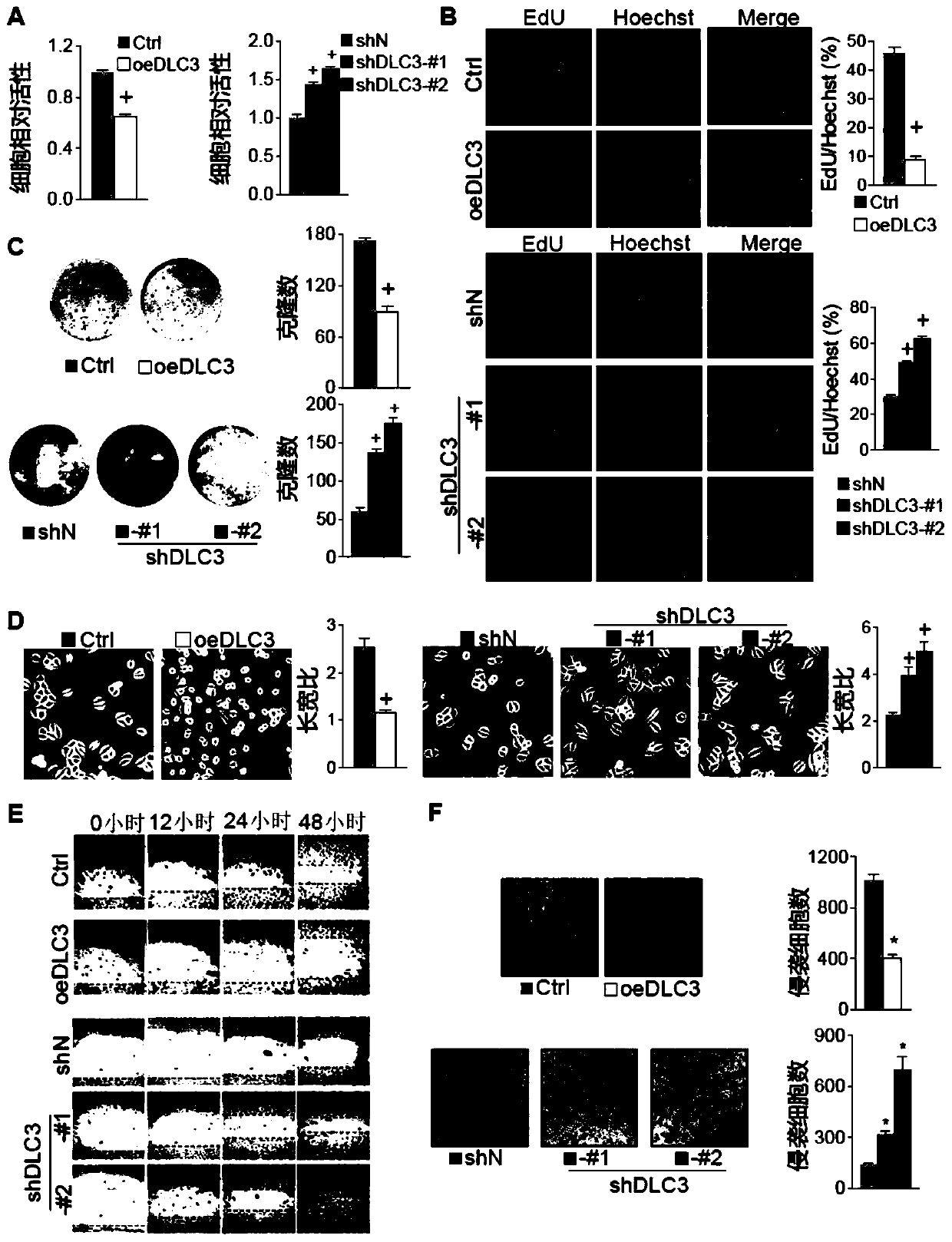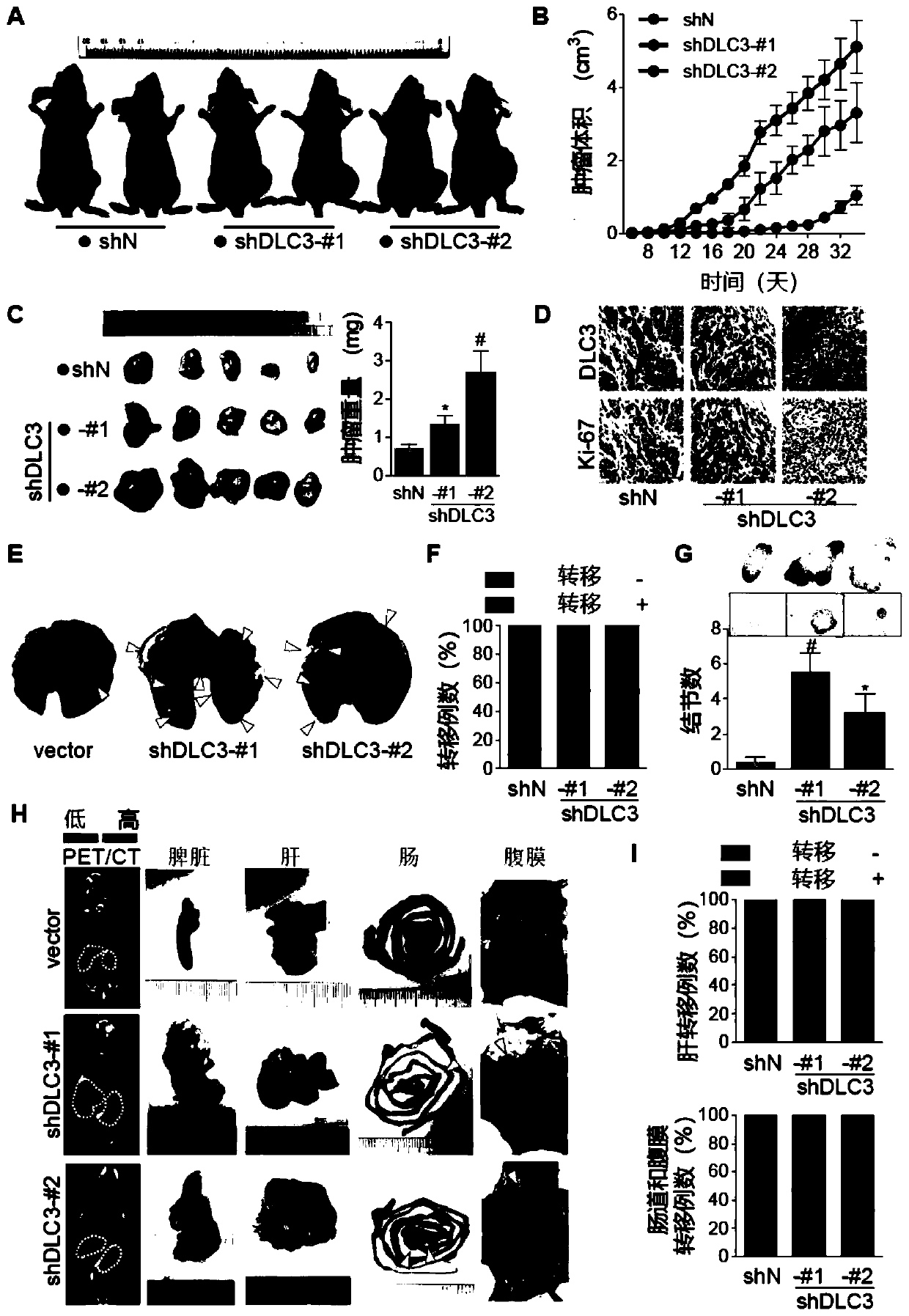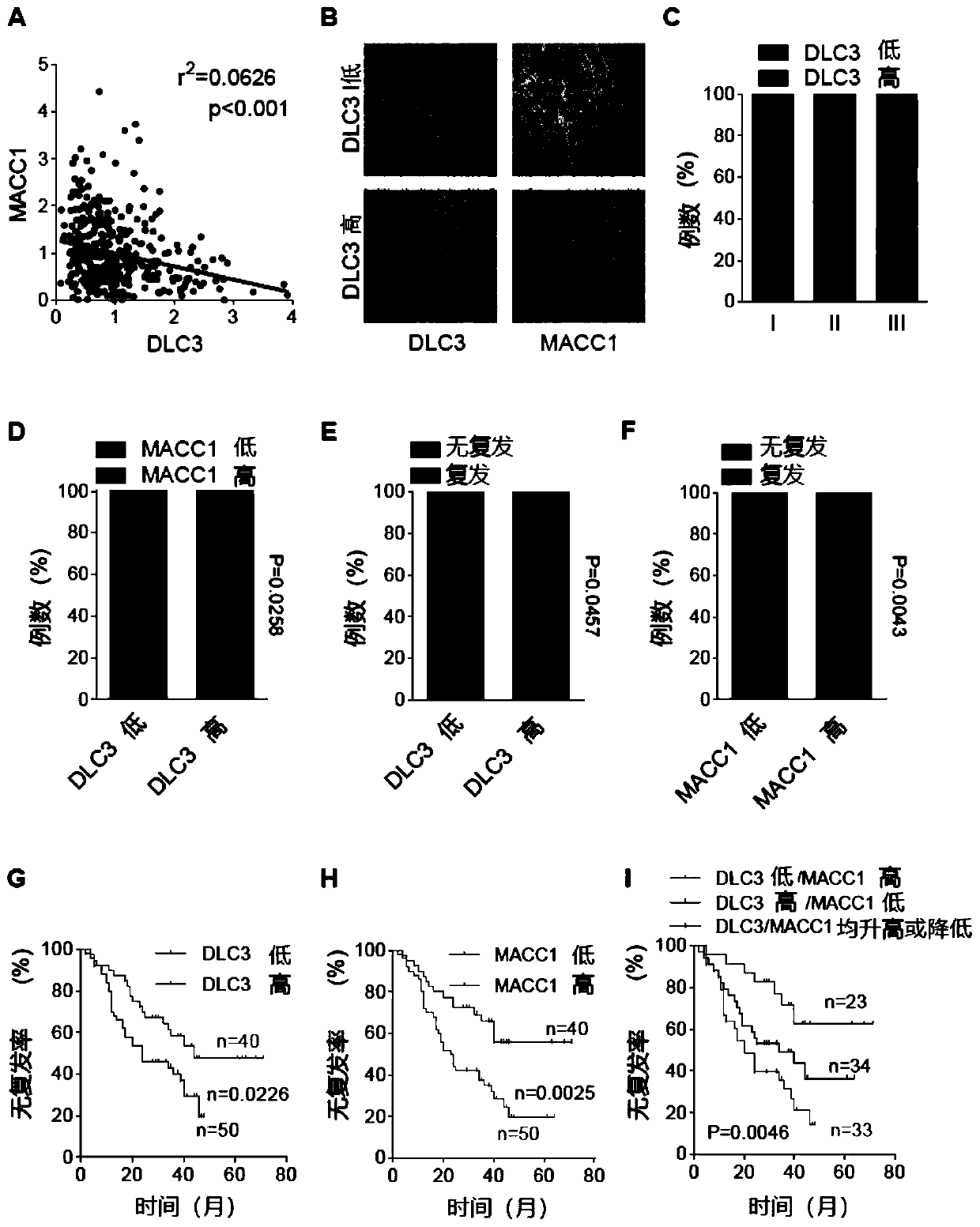Use of DLC3 for preparation of drug for targeted treatment of gastric cancer
A targeted therapy and drug technology, applied in the field of gene and protein function and application, can solve the problem that the relationship between metabolic stress is not completely clear
- Summary
- Abstract
- Description
- Claims
- Application Information
AI Technical Summary
Problems solved by technology
Method used
Image
Examples
Embodiment 1
[0109] Example 1: Low expression of DLC3 promotes the proliferation and migration of gastric cancer cells
[0110] In order to clarify the role of DLC3 in gastric cancer cells, the inventors used human MKN45 gastric cancer cells to construct gastric cancer cell models with DLC3 overexpression and silencing. Overexpression of DLC3 significantly inhibited gastric cancer cell viability ( figure 1 A), DNA synthesis ( figure 1 B) and clonogenicity ( figure 1 C). In contrast, inhibition of DLC3 expression significantly promoted the above biological processes. It shows that DLC3 negatively regulates the proliferation ability of gastric cancer cells.
[0111] Unexpectedly, the inventors also found that DLC3 can also affect the morphology of gastric cancer cells. When DCL3 was overexpressed, the cells shrunk into small balls, and the ratio of cell long diameter to short diameter decreased significantly ( figure 1 D). On the contrary, when DLC3 was silenced, the cells became long...
Embodiment 2
[0113] Example 2: Animal experiments prove that low expression of DLC3 promotes gastric cancer metastasis and affects glucose metabolism
[0114] On the basis of the cell model, the inventor further carried out the verification of animal experiments. Gastric cancer xenografts were inoculated subcutaneously in nude mice ( figure 2 A), silencing DLC3 significantly inhibited the growth rate of gastric cancer xenografts ( figure 2 B). On the 34th day, the xenograft tumors were taken for measurement, regardless of size and weight ( figure 2 C), or tissue Ki-67 expression ( figure 2 D), the growth of silenced DLC3 was significantly stronger than that of the control group.
[0115] In terms of metastatic ability, the inventors carried out tail vein injection of lung metastases model and spleen injection of liver metastases model for verification. Tumor cells were injected through the tail vein of nude mice, and it was found that the number of metastases in the MACC1 silencin...
Embodiment 3
[0116] Example 3: DLC3 / MACC1 Axis Jointly Affects the Prognosis of Gastric Cancer
[0117] In order to understand the relationship between DLC3 and MACC1, the inventors performed bioinformatics analysis. The results of TCGA gastric cancer data analysis showed that there was a significant negative correlation between DLC3 and MACC1 ( image 3 A). The inventors further collected clinical patient specimens after radical gastrectomy for stage I-III gastric cancer in Nanfang Hospital for detection, and the results of immunohistochemical analysis also indicated that MACC1 and DLC3 showed a negative correlation in protein expression ( image 3 B), and as the disease stage increases, the proportion of patients with negative DLC3 also gradually increases ( image 3 C). In DLC3 negative patients, the proportion of MACC1 positive expression was higher ( image 3 D), and the risk of relapse was higher in DLC3-negative and MACC1-positive patients ( image 3 E and F). In terms of surv...
PUM
 Login to View More
Login to View More Abstract
Description
Claims
Application Information
 Login to View More
Login to View More - R&D
- Intellectual Property
- Life Sciences
- Materials
- Tech Scout
- Unparalleled Data Quality
- Higher Quality Content
- 60% Fewer Hallucinations
Browse by: Latest US Patents, China's latest patents, Technical Efficacy Thesaurus, Application Domain, Technology Topic, Popular Technical Reports.
© 2025 PatSnap. All rights reserved.Legal|Privacy policy|Modern Slavery Act Transparency Statement|Sitemap|About US| Contact US: help@patsnap.com



